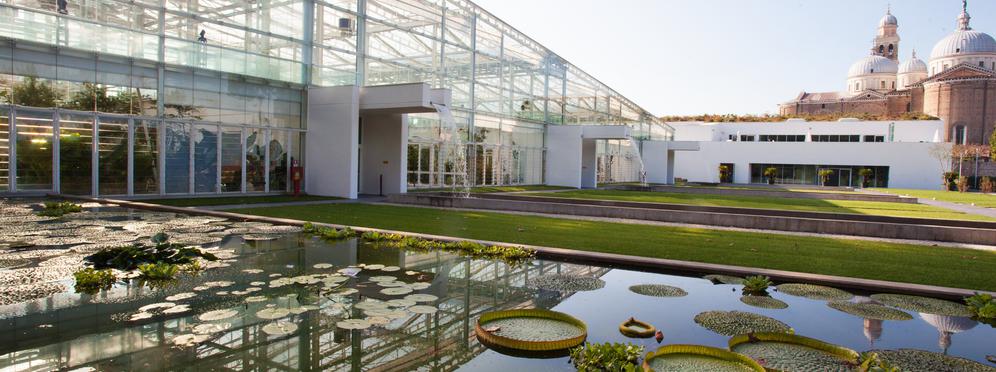The biodiversity garden
The species in the Biodiversity Garden exhibition project number are about 1,300.

IMPORTANT NOTICE: the Biodiversity Garden greenhouses are closed to the public from 18 July 2023
The species in the Biodiversity Garden exhibition project number are about 1,300. They live in environments sharing the same humidity and temperature characteristics, simulating the climatic conditions of the planet’s biomes, from tropical to sub-humid, temperate and arid zones.
The position of the plants in each environment and of the aquatic plant lake reflects a phytogeographic division – Plants and the Environment is a voyage through the Earth’s vegetation (in America, Africa and Madagascar, Asia, temperate Europe and Oceania). And the visitor can immediately see a representation of the richness (or poverty) of biodiversity present in each climate zone.
The Garden does not represent the planet from the viewpoint of man or the animal world, attention is rather shifted to the various forms of plant life. Starting with the questions: “what is a plant?” and “what characteristics make it so indispensable for our existence?”, the role played by plants in human evolution emerges, from the earliest settlements in prehistoric times until today. As early as 1880, in the text "The power of movements in plants", Darwin wrote that “the tip of the radicle acts like the brain of one of the lower animals”. An intuition backed by the most recent scientific discoveries and which is the ideal inspiration for Plants and Humankind. Information panels, films, interactive displays and exhibits recount how the intelligence of plants and the intelligence of humans have coevolved in parallel from Lucy until our times. Plants tell of their age-old relationship with human beings – used to nourish, treat or construct the objects which make up our history.
Outside the greenhouses, the flowerbeds are dedicated to specific themes, with cultivation of species compatible with the local climate, such as food plants, flower gardens and aromatic herbs. The themed gardens in fact represent a space open to realization in the name of the Garden’s scientific interest and dissemination to the public.






